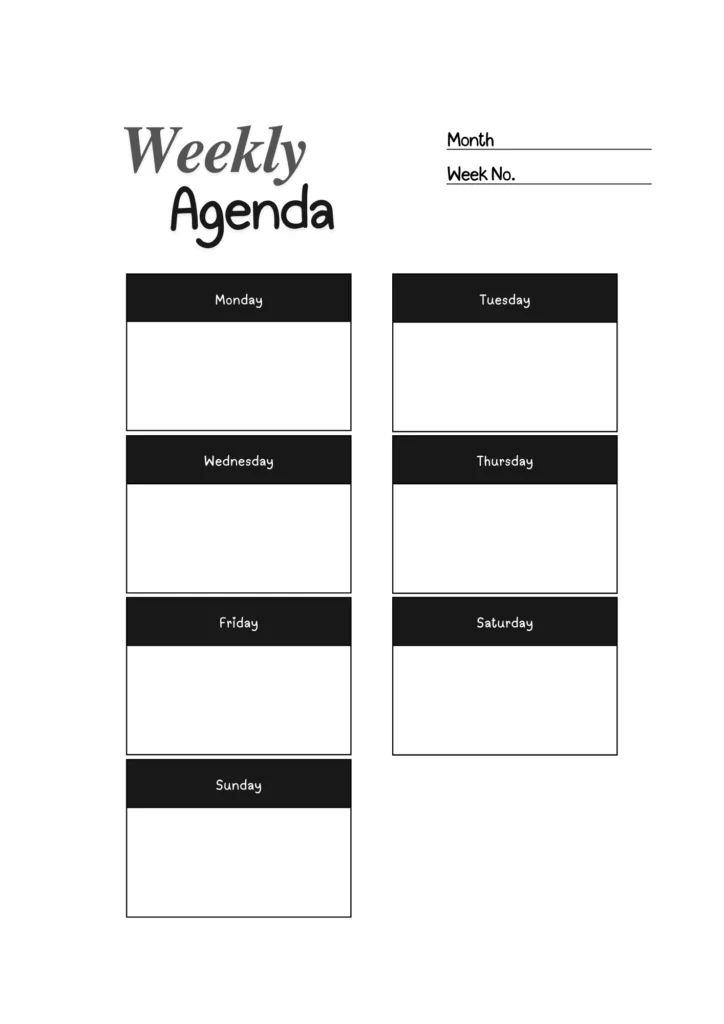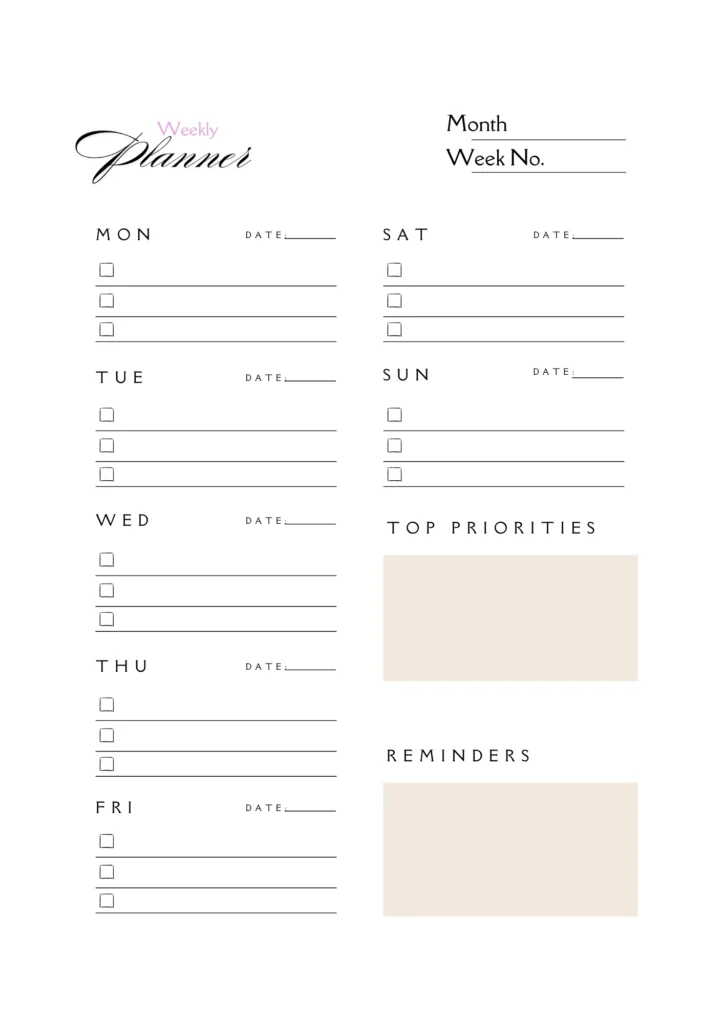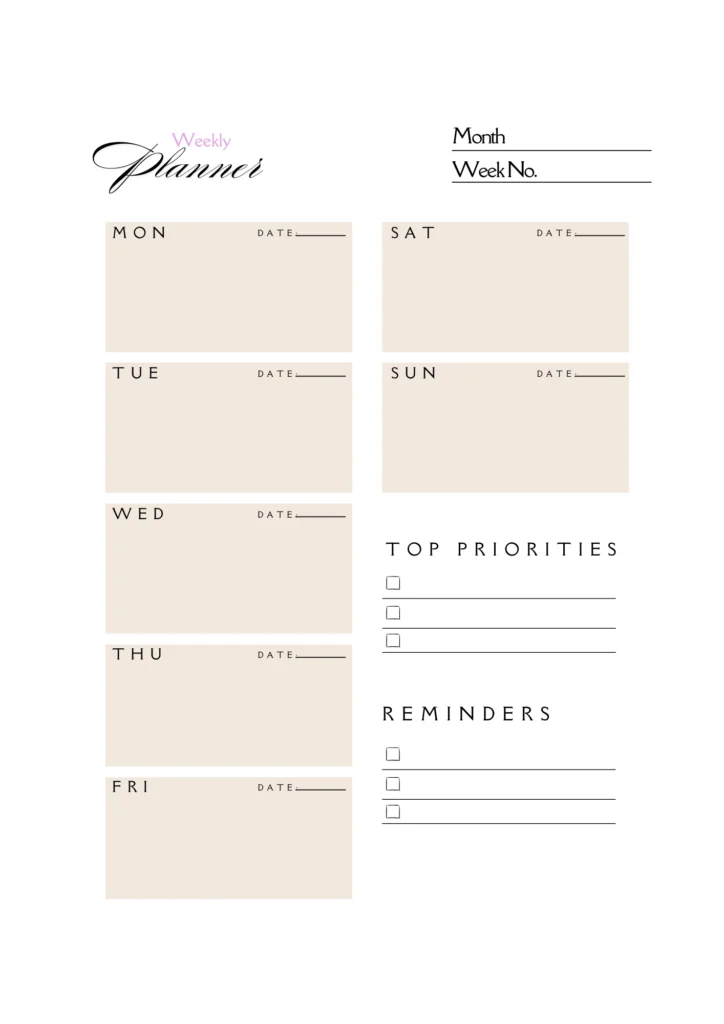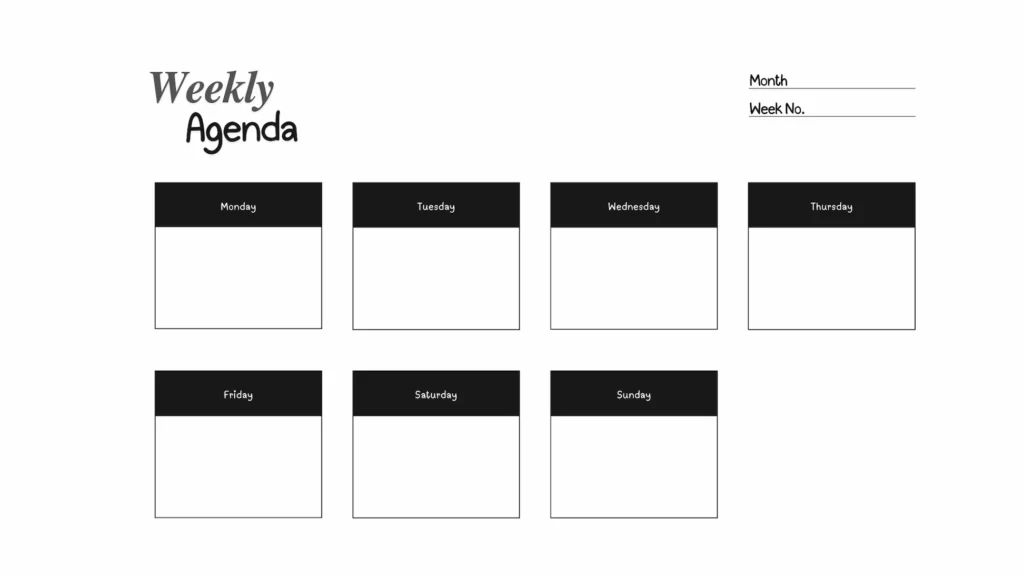
Weekly tracker templates offer the perfect balance between daily detail and monthly overview, making them essential tools for effective planning. When you use weekly tracker templates consistently, you gain a clear view of your entire week while maintaining the flexibility to adjust as priorities change. Here’s how to maximize these powerful planning tools for better organization and productivity.
Why Weekly Tracker Templates Beat Daily-Only Planning
Weekly tracker templates provide advantages that daily planning alone can’t offer. While daily trackers help with immediate tasks, weekly templates let you see patterns, plan for busy periods, and balance your workload across seven days instead of cramming everything into today.
Using weekly tracker templates also prevents the overwhelm that comes from trying to plan too far ahead. A week is manageable enough to plan realistically while giving you enough time to accomplish meaningful goals and projects.
Step 1: Choose Your Weekly Tracker Template Style
The right weekly tracker template depends on how you prefer to visualize and organize your week.
Classic weekly agenda planner: Traditional layout with days arranged vertically or horizontally. Perfect for people who like structured, straightforward planning with clear day-by-day sections.
Goal-focused weekly tracker: Designed for people working toward specific objectives. Includes sections for breaking down goals into daily tasks and tracking progress throughout the week.
Minimalist weekly template: Clean, simple design with just the essentials. Ideal for people who want basic weekly organization without visual clutter or overwhelming sections.
Horizontal weekly tracker: Landscape format that gives you more writing space across each day. Great for people with busy schedules who need room for detailed notes.
Select a weekly tracker template that feels natural to your planning style rather than trying to force yourself into a format that doesn’t fit.
Step 2: Set Up Your Weekly Planning Ritual
Consistent weekly planning sessions are crucial for making weekly tracker templates work effectively.
Sunday planning session (15-20 minutes):
- Review the upcoming week’s appointments and deadlines
- Set 2-3 main goals for the week
- Distribute tasks across days based on your energy and schedule
- Note any preparation needed for important events
Wednesday check-in (5 minutes):
- Assess progress on weekly goals
- Adjust remaining days based on accomplishments so far
- Move or reschedule tasks if needed
Friday reflection (10 minutes):
- Review what you accomplished during the week
- Note lessons learned for better planning next week
- Celebrate completed goals and tasks
This ritual ensures your weekly tracker templates become active planning tools rather than passive documents.
Step 3: Master Strategic Task Distribution
Effective use of weekly tracker templates requires smart distribution of tasks and goals across seven days.
The weekly load balancing approach:
- Avoid cramming all important tasks into one or two days
- Spread high-energy tasks throughout the week
- Balance work commitments with personal activities
- Leave buffer days for unexpected urgent items
Energy-based scheduling:
- Schedule demanding projects during your most productive days
- Plan routine tasks for naturally lower-energy periods
- Use weekend days strategically based on your work schedule
Deadline awareness:
- Work backward from deadlines to distribute preparation tasks
- Build in extra time for complex projects
- Schedule review time before important deadlines
Step 4: Integrate Weekly and Daily Planning
Weekly tracker templates work best when combined with daily planning for complete organization.
How to connect weekly and daily systems:
- Use your weekly tracker template for big-picture planning
- Transfer daily priorities from your weekly view to daily trackers
- Update your weekly tracker as daily plans change
- Reference your weekly goals when making daily decisions
Weekly-to-daily workflow:
- Plan your week using your weekly tracker template
- Each morning, check your weekly plan
- Transfer that day’s priorities to your daily tracker
- Update your weekly tracker with any changes or new information
Step 5: Track Progress and Build Accountability
Weekly tracker templates become powerful when you use them for both planning and progress monitoring.
Progress tracking techniques:
- Use checkboxes or symbols to mark completed tasks
- Color-code different types of activities or priorities
- Note obstacles or challenges that affected your plans
- Track how long tasks actually took versus estimates
Weekly accountability practices:
- Share your weekly goals with someone who will check in
- Take photos of completed weekly tracker templates
- Keep a running log of weekly accomplishments
- Identify patterns in what you consistently complete or avoid
Step 6: Customize Your Weekly System
Make your weekly tracker templates work for your specific lifestyle and goals.
Personalization options:
- Add habit tracking sections for consistency building
- Include meal planning or health tracking areas
- Create sections for different life areas (work, personal, health)
- Add motivational quotes or reminder notes
Adaptation strategies:
- Modify templates based on seasonal changes in your schedule
- Adjust sections as your priorities or responsibilities change
- Experiment with different layouts until you find your perfect fit
Common Weekly Planning Mistakes to Avoid
Overestimating weekly capacity: Don’t try to accomplish a month’s worth of tasks in one week. Be realistic about what you can complete.
Ignoring your weekly tracker mid-week: Check and update your weekly tracker template throughout the week, not just on planning day.
Planning without considering your actual schedule: Account for existing commitments, travel time, and energy levels when using weekly tracker templates.
Treating your weekly plan as unchangeable: Flexibility is key. Adjust your weekly tracker as priorities shift or unexpected events occur.
Download to Get Started
I hope you’re feeling inspired to try out one of my weekly tracker templates. You can find all the printables I mentioned right here on this page. Just download, print, and start planning!
Remember, the goal is to make your life easier, not to create more work for yourself, as we are all famous for. Find a system that works for you and stick with it.
The Bottom Line: Weekly Planning Success
Weekly tracker templates work because they provide the perfect planning timeframe—long enough to accomplish meaningful goals but short enough to stay focused and realistic. The key to success is consistent use and honest reflection on what works for your specific lifestyle.
Start with basic weekly planning and gradually add features like goal tracking or habit monitoring as the routine becomes natural. Remember: the best weekly tracker template is the one you consistently use and adjust to fit your changing needs.
Your weekly tracker templates become more valuable as you use them over time. The patterns you notice and the planning skills you develop will improve your overall organization and help you accomplish more while feeling less stressed about your schedule.
FAQ
I’ve also gathered some common questions about weekly trackers to help you get started:
Absolutely! I use mine for both. You could use different sections or colors to separate work and personal tasks on your weekly to-do list printable.
It’s all about personal preference. Try out a few different styles and see what feels most natural and helpful for you.
That’s normal and expected. Use your weekly tracker template to adjust and learn, not as a rigid schedule you must follow perfectly.





3 Comments
Hi there, I log on to your blog daily. Your writing
style is awesome, keep it up!
Thank you!
Appreciate the recommendation. Let me try it out.